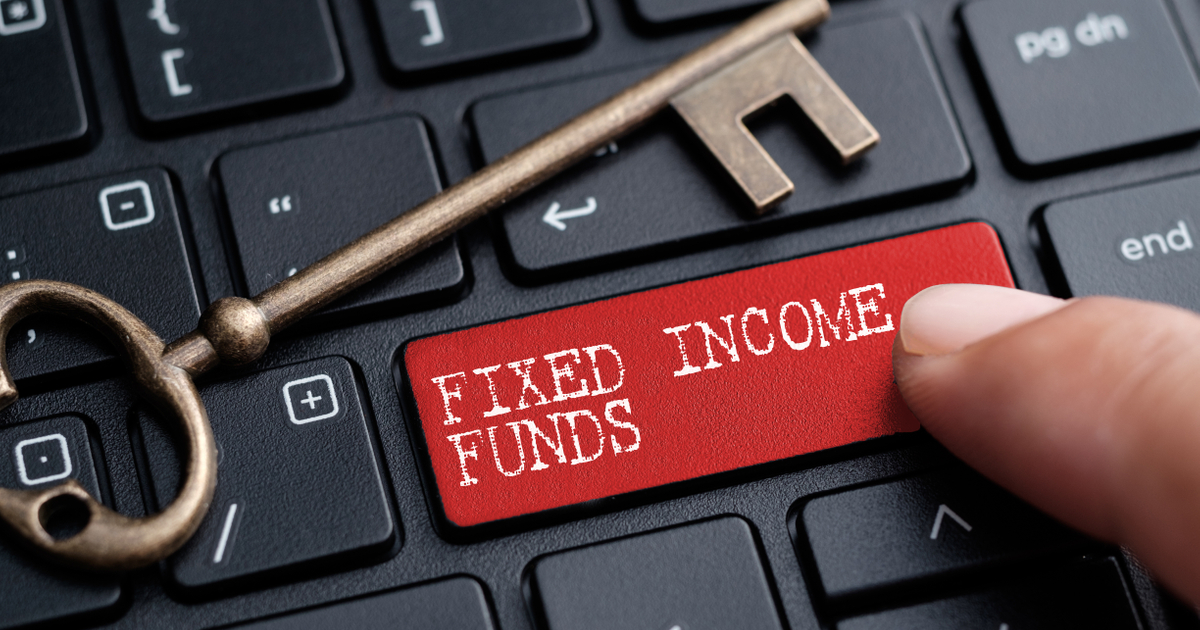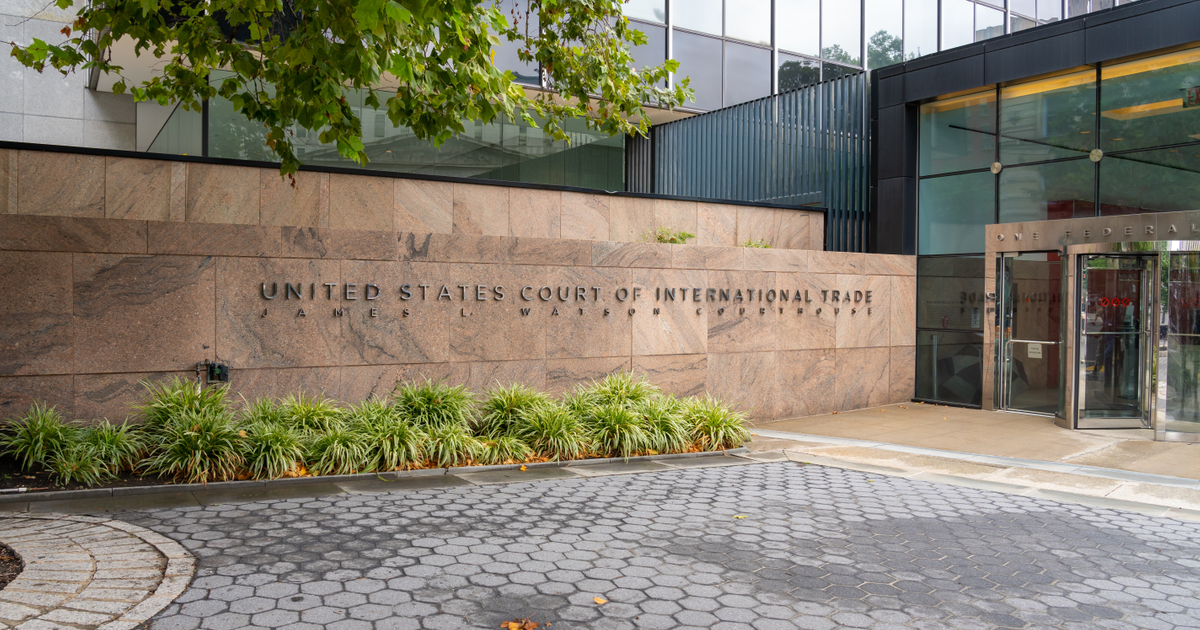Reputation Management: How to Protect Your Brand Online in 2023
Reputation management happens on online review sites, social media, and in the news.

Reputation management happens on online review sites, social media, and in the news.

Managing the chatter online can feel like a daunting task, mostly because so much of it is out of your control.
After all, 77% of consumers read reviews when they're browsing local businesses. 79% of consumers expect brands to respond within 24 hours after reaching out on social media. There are so many channels where people can talk about your brand, it can be tough to listen and respond to it all.
Luckily, there are plenty of tools and strategies you can use to protect your brand and reputation. In this post, we’ll give a clear overview of what you need to know to manage your business reputation including:
What is reputation management? What is brand reputation management? Reputation Management for Businesses How to Build a Reputation Management Plan Reputation Management SoftwareWhat is reputation management?
Reputation management is the act of managing public perceptions about a business or enterprise. This process has become more important as online conversations about businesses become the norm.
Reputation management techniques can include suppressing or reacting to messages online. These strategies might also include SEO, social media, or PR outreach and campaigns.
When your reputation is positive, you inspire customer loyalty, a significant driver of revenue and growth. A negative reputation can be damaging to sales and customer retention, but it also helps you learn about what customers like, which can be helpful for updating business processes to better meet consumer needs.
What is brand reputation management?
Brand reputation management is the process of monitoring how consumers perceive your brand and taking strategic action to improve your brand's image. Nowadays, reputation management is often centered on monitoring and protecting your brand’s online reputation in reviews, social media, and Google.
Brand reputation management is a continuous process. It allows you to stay on top of your brand’s public perception and address possible damaging situations as soon as they occur.
Reputation management and brand reputation management are sometimes used interchangeably. While there are similarities in definitions and practice, there are some crucial differences.
Brand reputation management focuses on a single brand, while reputation management impacts the business as a whole.
If a brand develops a reputation that isn't connecting with its target customers, businesses have the chance to rebrand. For example, Airbnb rebranded in 2014 to help shift perceptions of the brand from tech-centric to people-centric.

That said, some businesses are so brand-centric that a rebrand can't transform the reputation of the business. For example, Weight Watchers rebranded to WW in 2018 to shift the focus of the brand from dieting to health and wellness. In this example, rebranding made a less positive impact.
The reputation of your brand is only one part of how people perceive your business.
A strong brand reputation can entice a customer to trust a business. But reputation management measures and responds to the reputation of the business as a whole.
So, a business can have a strong brand reputation. At the same time, it may also need to do reputation management for production practices, sustainability, or other concerns that can impact reputation.
Brand safety is often connected to brand reputation management. We’ll explain it below.
Brand Reputation Management vs. Brand Safety
According to the Internet Advertising Bureau (IAB), brand safety makes sure that advertisements, their content, and any content shared by brands are appropriate. It also guides brands to steer away from inappropriate topics. Although somewhat similar concepts, brand safety falls into brand reputation management.
An example that can risk brand safety is correct ad placement. The IAB recommends purchasing ad space from trusted publishers. This way, your ads aren’t next to content that consumers may find offensive or cause them to distrust your brand.
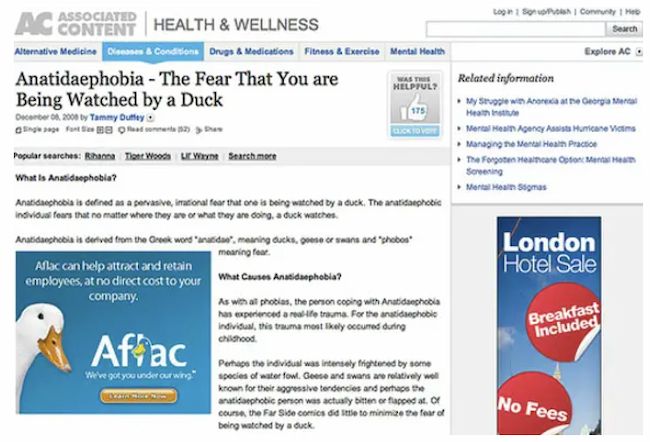
You also want your advertisements to relate to what you're advertising. If customers click on an ad for a new blanket and they're sent to unrelated content, you’re practicing malicious advertising. This risks the safety of your consumers.
Brand safety goes both ways. It protects your business from outside sources that aim to harm. It also protects your customers from malicious business practices that may offend them or cause them to lose money.
Brand safety is a process within brand reputation management. You’re ensuring that your advertising practices are legitimate. This makes sure that your consumers feel they can trust your business and what you have to offer.
Reputation Management for Businesses
To understand how a business might develop a reputation management strategy, I spoke with Ellie Flanagan, a HubSpot alum who specializes in corporate communications.
"The first step in shoring up your brand's presence online is making sure that all your owned channels reflect your current imagery, messaging, and values. Check for outdated logos, company descriptions, or mission statements. It's also helpful to do regular audits of other places where your logo or brand might be in use — such as on partner or customer websites."
To conduct regular audits, follow the reputation management guidelines below.
Flanagan also says, "Make sure you have clear language on your website that outlines your company's trademarks and sets guidelines for how others can use your brand assets. That will be a helpful reference if you need to reach out to someone who's using your brand incorrectly or without permission."
I also spoke with Alice Sol, a Senior Public Relations Marketing Manager at HubSpot.
She told me — "Protecting your brand has never been more important, and that goes hand-in-hand with customer trust. We live in a world where information travels rapidly, and we can get a response in seconds at the touch of a button. Technology has enabled us, as consumers, to get in touch with brands quickly — at the same time, it's given brands the ability to form deeper connections and resolve issues faster."
Sol also advises businesses to do their best to meet customer needs and offer a seamless experience, start-to-finish. She says, "The stakes [on delivering a good experience] are getting higher. If a customer has a bad experience, technology allows information about that experience to travel quickly. At the same time, if a customer has a very positive experience, that creates a strong brand reputation and forms trust."
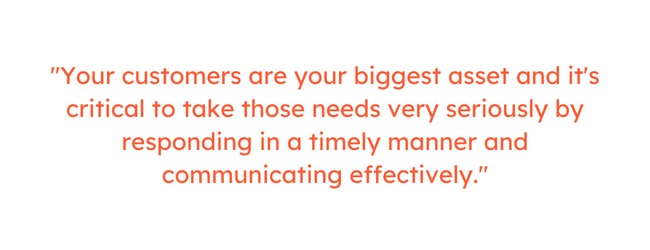
"Your customers are your biggest asset and it's critical to take those needs very seriously by responding in a timely manner and communicating effectively."
To sum it up, when protecting your online reputation, you'll want to focus on the following tactics:
Make sure all your owned channels show your current imagery, messaging, and values. Check that all online information about your business is up-to-date and consistent. Use precise language on your website to outline your company's trademarks and set guidelines. Cultivate a positive user experience, start to finish. Listen to customer feedback and respond to negative feedback with helpful, actionable solutions when possible.How do companies manage their reputation?
Each business is unique, so each business will make different decisions to manage its reputation.
For example, small businesses can make a huge impact just by being trustworthy and offering value to customers. But as a business grows, communication can get more complicated.
The strategies and tactics above can help support your brand. You can also influence business reputation with:
Local SEO Community management Employer branding Customer experience strategyLooking at reputational risk, corporate image, and review management can also help support your reputation management efforts.
What does a brand reputation manager do?
A brand reputation manager supports a brand's reputation on the internet by managing online resources.
Some brand reputation managers get involved in the branding process. Others use online channels and platforms to track and influence public perception of the brand.
Brand management might involve analyzing reviews and online mentions. It could also mean measuring brand sentiment to create and maintain a positive brand image.
How to Build a Reputation Management Plan
Whether you're part of a small team or a large enterprise, reputation management is essential. Let’s go over a sample reputation management plan that you can adapt to fit your business needs.
Important note: Reputation management is a continuous process. For a powerful and positive business and brand reputation, follow these steps consistently as long as your business is up and running.
1. Research, monitor, and audit your reputation.
The first step to reputation management is research. During this phase, you’ll use the internet to discover conversations about your business and what people are saying about you.
Aim to seek out different types of conversations. All feedback is helpful for understanding perceptions and improving your reputation.
You can conduct this audit by searching:
Your customer reviews Review sites Social media Searching for your business’s name on Google and other search enginesYou can also search for business-relevant keywords or even the feeds of your competitors. Consumers are talking; you just have to meet them where they already are.
There are many different platforms and websites you can use to conduct your research. That said, using a high-quality reputation management tool will make the process easier.
If you're ready to get started, check out recommendations for a reputation management tool here.
2. Create reactive and proactive management strategies.
Once you understand your brand and business reputation, you’ll know where you need to focus to improve it.
For example, suppose your audit shows that conversation around your brand is unfavorable. In that case, you'll want to improve the experiences that people have with your business and conversations about your brand.
This research can also help you notice trends and industry changes that could impact your reputation in the future.
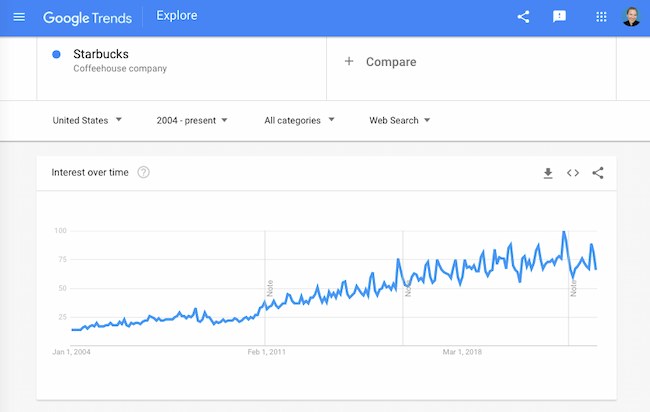
Using this information, your next step is to create a consistent management strategy. This strategy should clearly outline what your business wants to achieve with each piece of shared information. It includes goals, preferred tools, and timing. Regardless of what your current standing is, your plans should address the following:
Who will consistently monitor online conversations?
Choose specific people at your business to track your reputation. These employees will be in charge of continuous research and tracking conversations about your business online.
If your business doesn't already have a brand reputation manager, employees on customer-facing teams are good candidates. They're likely the most equipped to speak with customers and create public messaging.
How do you decide which comments, reviews, or mentions need responses?
Some people’s only intent is to troll rather than speak about legitimate experiences. These comments and conversations are fake, created to purposely diminish your reputation. But most comments come from real interactions and experiences. They're genuine feedback about your brand, both positive and negative.
You should never respond to reviews that seem fake. Here’s a guide on spotting and removing fake reviews from Google.
But you should respond to comments from real consumers, which is why it’s essential to understand which reviews call for a response.
It’s not always possible to respond to every review. If this is the case you might want to create a strategy to prioritize your responses, like responding to customer questions first. Or create specific requirements that dictate when a response is necessary.
If your audit and monitoring reveal a strong reputation, it’s still wise to prepare for change.
Recent data says that 69% of surveyed businesses experienced at least one crisis in the last five years. At the same time, only 45% have a documented crisis communication plan.
The way that a business responds during a crisis can have a major impact on its reputation. This makes a proactive reputation management plan that accounts for crises important.
Planning for emergencies can help your team craft the right response during situations that escalate quickly or are difficult to control. These situations may leave responsible parties frantic and less likely to follow standard guidelines.
More resources:
Situational crisis communication Crisis communication plan examples3. Develop a tone guide for responding to comments.
It's essential to respond to comments about your business and brand with a consistent tone of voice. For example, say you respond to criticism harshly but offer positive comments with returned positivity. This approach could do more harm than good because it seems defensive and inauthentic.
Develop a standard tone guide that you will use when responding, and aim to stick to it. This includes language for your crisis management plan.
Introduce your brand's tone of voice and tonal values, explaining what they stand for and how they support your brand and company mission. These guides to brand voice and humanizing your brand can help you figure out the right messaging for any situation.
Then, give detailed, practical support to the people creating content for different channels.
Featured offer: How to Create a Brand Style Guide, With Free Templates

4. Communicate the plan to your organization.
Now that you have a clear plan and organized communication for following it, you're ready to share your reputation strategy with the team.
Reputation management isn't just the responsibility of your brand reputation manager. Any person connected to your business can have an impact on its reputation. So, your team should share accountability for this plan.
To create this sense of accountability, you'll want to inspire your team with the possibilities of the plan. Then, hold meetings and explain the details. With each session, communicate how each employee can align their work with its impact on reputation management.
For example, it's easy for an employee to share a quick internal email externally. While this sharing could be harmless, it could also take a message out of context and put the business in a challenging position.
5. Take action based on comments, feedback, and reviews.
Understanding how consumers view your brand is the most valuable tool for improvement and innovation. It's also an essential action item for managing your reputation.
Their criticisms and pain points will direct you to areas of your business that need increased attention. At the same time, their positive comments let you know what you’re doing right and what you should continue doing.
As you’re hoping to manage your reputation, take action based on comments, feedback, and reviews. This helps you manage your reputation as you’re making changes that customers want to see.
While your communication plan will include tips and templates for tone and messaging, don't forget to listen. Solutions are important, but customers will be more open to your ideas if they feel like you heard their concerns.
6. Constantly practice steps one, two, and three.
Managing your online reputation is a continuous effort. Although it feels good to solve a big problem, fixing one situation doesn’t mean that everything is smooth sailing from now until forever.
Always research and track conversations about your business. This will give you a sense of where your reputation stands. Then, follow the steps of your plan and act on the feedback you receive.
As you track your business reputation over time, remember to adjust. Pay attention to small shifts, not just major events. You may also want to conduct regular surveys with employees who spend the most time speaking with customers. This can give you ideas to improve your outreach.
It's also a good idea to offer continuous training and feedback sessions. This can help your team align with changes in your business that can impact your reputation, even if it doesn't overlap with their day-to-day work.
7. Track your results.
To learn whether your reputation management strategies are working, you'll need to measure your results.
There are many different KPIs you can track to assess reputation including:
Financial and sales performance Brand or customer loyalty Net promoter score Customer lifetime value Repeat purchase rate Employee satisfaction Stakeholder surveys Social media reach Sentiment analysis Share of voiceThe metrics you use to track your reputation will depend on your business goals as well as the issues you may find in your research.
These resources can help you figure out which metrics are best to track brand health, brand equity, and brand perception.
Let’s go over some high-quality tools you can use to support your reputation management process.
Reputation Management Software
Reputation management software can help businesses in a variety of ways. Some monitor review platform entries by flagging negative reviews and gathering new ones. Others highlight customer testimonials and track brand mentions on social media.
These tools make it easier to collect and analyze reputation data to manage a business or brand reputation. Some also conduct sentiment analysis for quick resolution of potential issues.
It can be helpful to use reputation management software, particularly if you work for a small-to-medium-sized business with limited PR resources. Below we’ll review some top choices.
1. Yext Reviews
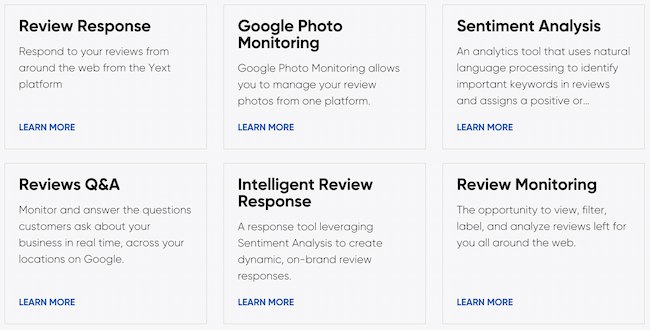
Since inconsistent information can impact SEO, it's critical that your business's data is consistent on each site. Fortunately, Yext lets you fix inconsistencies all in one place.
This software also lets you manage your reputation through social media. It makes it simple to respond to authentic customer reviews that can impact your brand's true online reputation.
Yext is ideal for small-to-medium-sized businesses. It's also a tool for enterprise companies — some of its impressive customers include Lego and Samsung.
Price: Plans start at $199/year.
Pro tip: Sync customer data with the HubSpot integration for seamless review collection.
2. ReviewTrackers
![]()
This platform collects online reviews from third-party review sites, including Google, TripAdvisor, and Facebook. A critical feature to call out is that you can receive notifications whenever a customer leaves a review. This helps your team stay up-to-speed on feedback.
This cloud-based reputation and review management software also allows you to track trending issues and topics. This gives you a big-picture view of customer issues. Features also include competitor tracking and performance analytics.
The tool, used by customers like U.S. Bank, is available for enterprise companies and small-to-medium-sized businesses.
Price: For pricing, use their pricing tool or request a demo.
Pro tip: Use the customizable Ask Tool to collect more online reviews.
3. Reputation
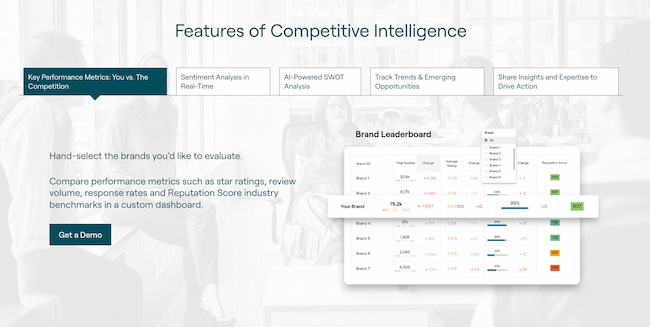
Reputation is the only platform that manages consumer feedback from acquisition to loyalty. This platform is your business’ eyes and ears in the spaces where customers talk, post, review, and recommend.
Reputation analyzes vast amounts of public and private feedback data to uncover predictive insights for companies to act on and improve the customer experience.
From reviews and surveys to social and business listings, the Reputation platform helps companies anticipate business needs and customer concerns.
Price: For customized pricing, request a demo.
Pro tip: Use RepScore to compare your brand reputation against competitors.
HubSpot customers: Use this integration to pull business reputation data into your HubSpot reports and dashboards.
4. Podium
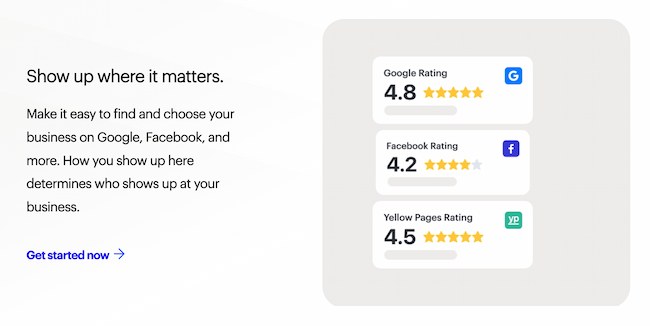
Managing your reputation on different sites like Facebook, Google, and Yelp can get overwhelming. Podium helps you see all customer interactions and online reviews in a single dashboard.
Your employees can use Podium to request reviews and respond to reviews in real time. They can even exchange text messages with potential customers.
Podium's support team is available through phone, online chat, or email, and they make sure you have the help you need to install their tool. The software works best for small-to-medium local businesses with the time and resources to manually send texts to customers or leads.
Price: Plans start at $249/month.
Pro tip: Save time with automations that send follow-up texts to request reviews after each deal closes.
5. BirdEye
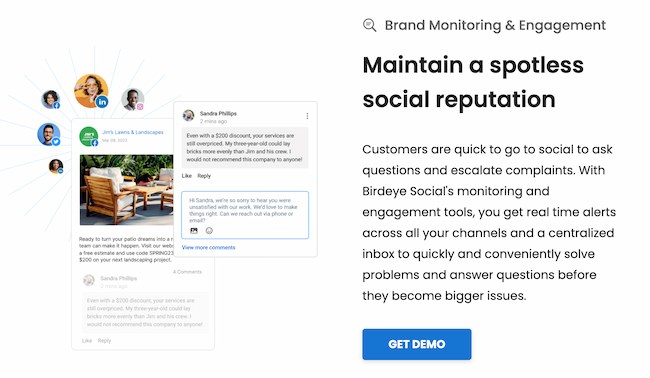
BirdEye, a SaaS tool used by 90,000+ businesses, collects feedback from 200+ review sources so that you have a complete picture of your brand's online reputation.
You can monitor, promote, and respond to reviews within one dashboard. BirdEye also offers features to:
Manage your social accounts Gain insight into your competitors' customers Create surveys and ticketsThese tools can help you further improve your brand experience and reputation. Birdeye also integrates with over 3,000 apps, including HubSpot.
Price: For customized pricing, request a demo.
Pro tip: Use Birdeye's dashboard to track reviews, draft responses, and escalate tickets for effective reputation management.
6. NiceJob
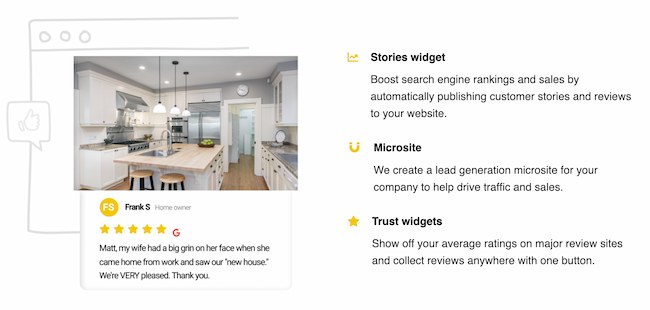
NiceJob is a cloud-based tool for reputation monitoring. It also offers easy-to-use tools for review management and social sharing.
A popular solution for small to mid-sized businesses, NiceJob includes features for automated review emails, SMS messages, and review reminders. Their features also offer tools to increase website engagement.
Price: Plans start at $75/month.
HubSpot customers: Use the NiceJob integration to add review requests and reminders to your workflows.
7. Reviews.io
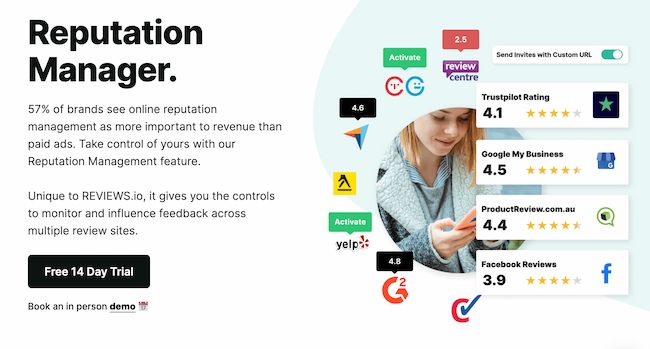
This tool simplifies the process of collecting reviews in a range of formats. Whether you're looking for genuine text, video, or photo reviews, you can make the most with this licensed Google Review Partner.
Reviews.io also collects reviews in real time and pulls them together in a streamlined reviews timeline. This can help your team speed up responses to the reviews that could most impact your reputation. It also simplifies the assignment process for small, busy teams.
This tool also offers an auto-generated reply feature to craft personalized review responses.
Price: Plans start at $89/month.
HubSpot customers: Use the Reviews.io integration to generate support tickets for urgent reviews.
Pro tip: Ecommerce businesses — use the widget library to add value for your customers on your home page and product pages.
Can reputation really be managed?
It's easy for customers to focus on the negative if the positive is hard to find. Reputation management is a useful strategy to bring what makes your business and brand great to the forefront.
It's a way to build back your brand after a crisis and to show customers that you are a responsible, credible, and authentic company.
Planning and strong leadership can help any business sail through rough reputational waters. Review these tips and ideas, then form a reputation plan that works for you and your brand.
Editor's note: This post was originally published in May 2021 and has been updated for comprehensiveness.

 Fransebas
Fransebas 













![How to Create an Infographic in Under an Hour [+ Free Templates]](https://blog.hubspot.com/hubfs/infographic-templates-1.jpg#keepProtocol)
_1.jpg)










